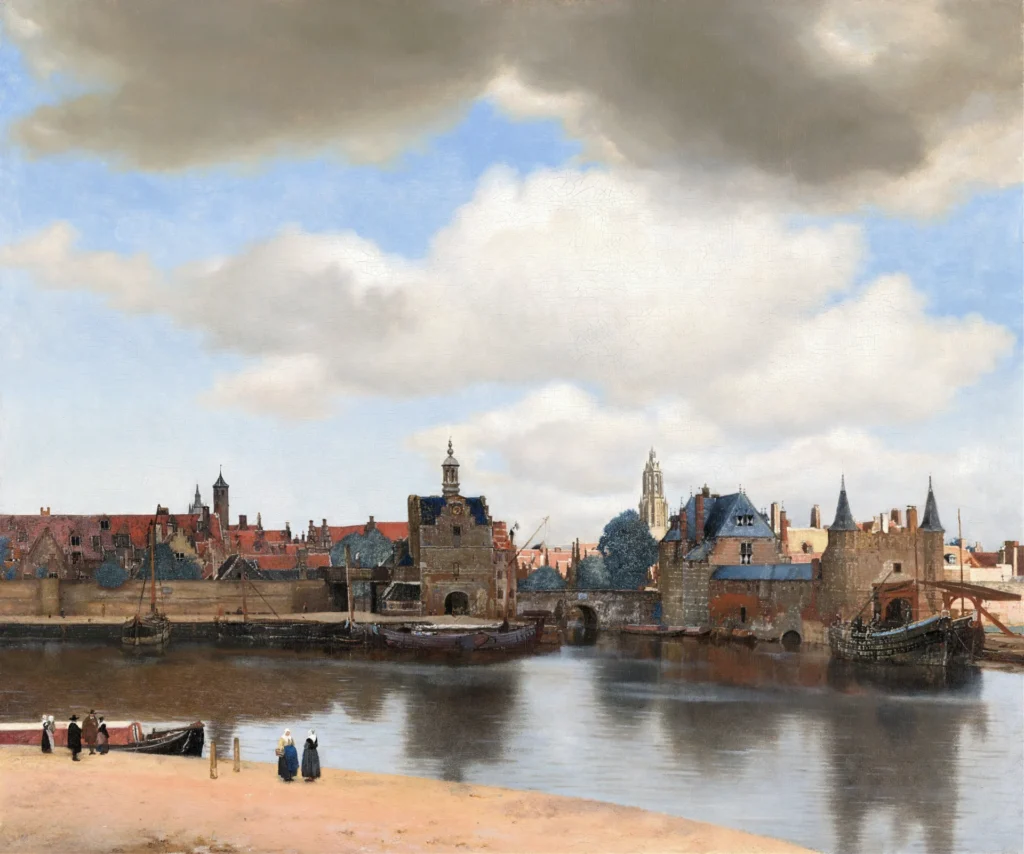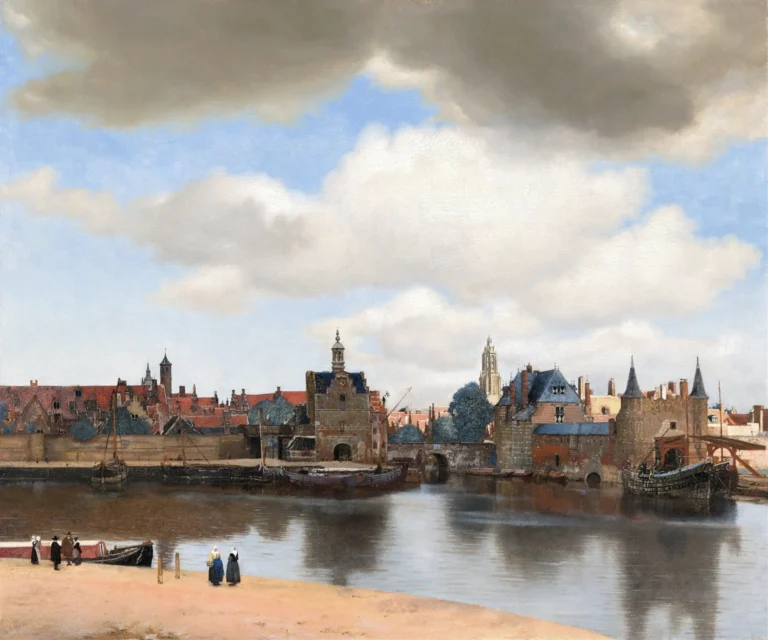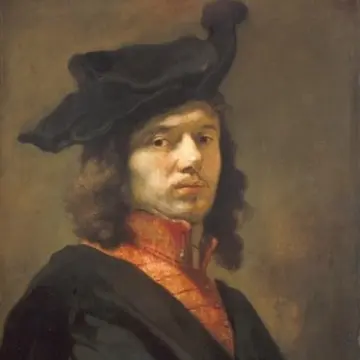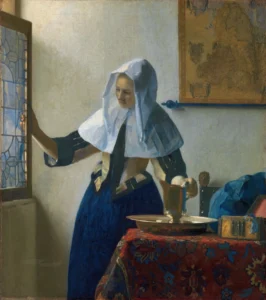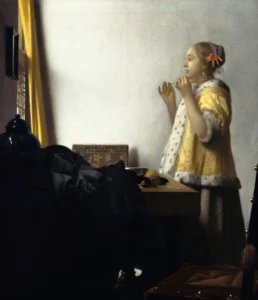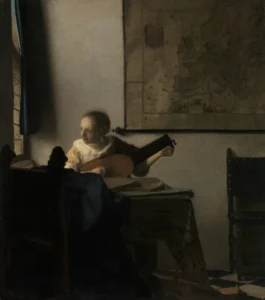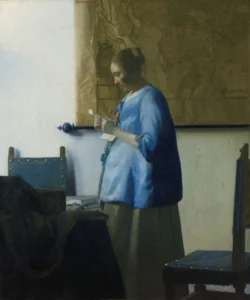View of Delft (1659 - 1661)
Johannes Vermeer's View of Delft is a stunning oil on canvas masterpiece painted between 1659 and 1661, showcasing the city of Delft post-reconstruction after the devastating explosion known as the 'Delft Thunderclap.' The artwork captures the essence of daily life through serene reflections on the Schie Canal, emphasizing the vibrancy of Dutch culture. Vermeer's exceptional use of light, color, and perspective makes this cityscape a hallmark of 17th-century art, embodying themes of resilience and community.
1659 - 1661
About the Artwork
Did You Know
Liked what you see? Add it to your collection.
Enjoyed reading? Share it.
... continued
Artist and Period
View of Delft is the work of Johannes Vermeer, a prominent Dutch painter of the Dutch Golden Age. It is one of his few cityscapes and stands out in his oeuvre, which is predominantly composed of interior scenes.
Location and Dimensions
The painting is housed at the Mauritshuis in The Hague, Netherlands, and measures 96.5 cm x 115.7 cm.
Composition and Perspective
Vermeer painted View of Delft from an elevated position, likely from the upper floor of the Mechelen tavern where his studio was located, looking southeast over the city. The composition features large horizontals of water, city, and sky, with clouds playing a significant role. The painting includes the Rotterdam Gate and the Schiedam Gate, along with the Nieuwe Kerk and the Oude Kerk, which were important landmarks in Delft. The Schie Canal, known as the Kolk, is prominently depicted, reflecting the city's buildings and adding depth to the scene.
Lighting and Color
The painting is renowned for its masterful use of light and color. Vermeer employed a range of pigments, including calcite, lead white, yellow ochre, natural ultramarine, and madder lake. The sky is filled with clouds, and the sunlight breaking through them highlights the roofs and buildings, creating a sense of depth and harmony. The reflection of the city on the calm water of the Schie Canal enhances the overall impression of serenity and movement.
Historical Context
View of Delft was painted after a devastating explosion in 1654, known as the 'Delft Thunderclap,' which destroyed a significant part of the city. The painting shows the city rebuilt and emphasizes its resilience. It also highlights the Nieuwe Kerk, which was a national symbol of Dutch independence and the final resting place of members of the House of Orange-Nassau.
Figures and Daily Life
In the foreground, Vermeer depicted everyday life in Delft, including people waiting to board a passenger barge and two women talking. These figures represent Dutch society at the time and add a sense of community and idealism to the painting.
Artistic Techniques
Vermeer’s use of lighting and composition is highly praised. The painting’s realism and attention to detail, particularly in capturing the effects of light, have led some scholars to suggest that he might have used a camera obscura, a precursor to the modern camera, to achieve these effects.
Significance
View of Delft is considered one of the most distinguished cityscapes of 17th-century Dutch art and is often regarded as Vermeer’s masterpiece. It has inspired numerous art critics and historians, including Théophile Thoré-Bürger, who played a role in rediscovering Vermeer’s work in the 19th century.




